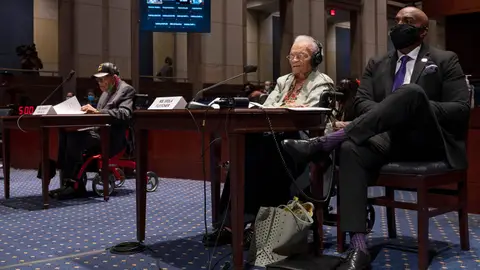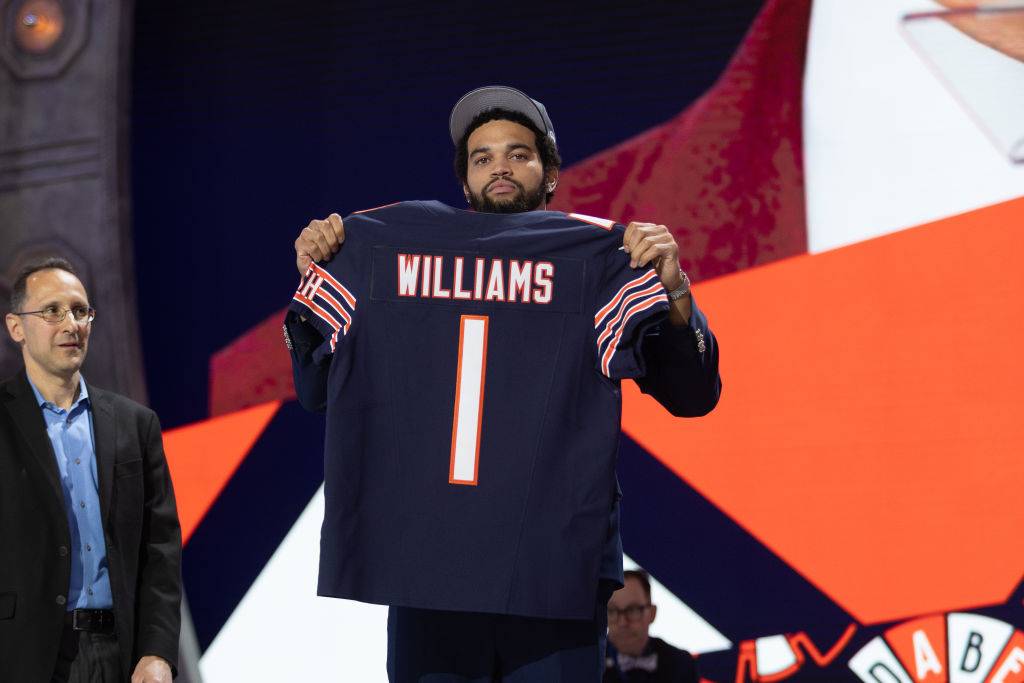Survivors of 1921 Tulsa Massacre Testify in Congress, Reliving Their Horrific Ordeal

Lawmakers heard the testimonies of three survivors of the 1921 Tulsa Race Massacre on Wednesday, in which they described the horror they saw as children when racist mobs descended on a prosperous Black district of the town, resulting in massive loss of life and property and left thousands homeless.
“I will never forget the violence of the white mob when we left our house,” said Viola Fletcher, 107, testified to the House Judiciary Subcommittee on the Constitution, Civil Rights, and Civil Liberties. “I still see Black men being shot, Black bodies lying in the street. I still smell smoke and see fire. I still see Black businesses being burned. I still hear airplanes flying overhead. I hear the screams. I have lived through the massacre every day.”
The extreme terroristic violence, which included looting, Black people being shot in broad daylight and even explosives, was prompted by an inflamed, but never proven, rumor of a young Black man sexually assaulting a white woman.
Fletcher is one of just three living survivors of the massacre, which took place May 31-June 1, 1921 and whose aftermath lasted much longer. She said that it forced her family out of Tulsa and changed the course of her life, denying her education and opportunities that she would have otherwise enjoyed.
Estimates vary on the number of deaths, ranging from 100 to 300, although some historians claim even more were killed. The attack decimated what has come to be known as “Black Wall Street,” an area surrounding Greenwood, Archer and Pine streets, which was known for its self-sufficient economics and with more than 300 Black-owned businesses, multiple opportunities for African Americans in the community. As many as 35 blocks were destroyed.
RELATED: Oklahoma Schools Add The 1921 Tulsa Race Massacre To Its Curriculum
The subcommittee hearing was the second surrounding the massacre. An earlier one took place in 2007 and came along with legislation that would have allowed those affected to take legal action in federal court despite statutes of limitation, USA Today reported. However, the legislation never won approval, but California Rep. Hank Johnson said that he would introduce another bill that would provide a similar chance for litigation.
“You may have been taught that when something is stolen from you, you can go to the courts to be made whole – you can go to the courts for justice,” said Hughes Van Ellis, a 100-year-old survivor and Fletcher’s younger brother. “This wasn’t the case for us. The courts in Oklahoma wouldn’t hear us. The federal courts said we were too late. We were made to feel that our struggle was unworthy of justice.”
“Mother” Lessie Benningfield Randle, 106, the third survivor of the massacre described the ordeal, saying that she lived a happy life as a little girl in Tulsa before her community was targeted.
"They burned houses and businesses. They just took what they wanted out of the buildings then they burned them. They murdered people. We were told they just dumped the dead bodies into the river," she testified. "I remember running outside of our house. I ran past dead bodies. It wasn't a pretty sight. I still see it today in my mind -- 100 years later."
RELATED: Russell Westbrook Wants To Educate Folks About The Tulsa Race Massacre
The three centenarians are the plaintiffs, along with descendants of victims, the Tulsa African Ancestral Society and Vernon A.M.E. Church -- the only Black-owned structure to remain standing, in a lawsuit filed last September pursuing reparations for the damage caused to the community, families and individual lives.
"Greenwood and North Tulsa Community residents continue to face racially disparate treatment and City-created barriers to basic human needs, including jobs, financial security, education, housing, justice, and health," the lawsuit says, according to CNN.
The plaintiffs said the damage caused was never truly repaired and they have lived their lives in poverty as a result. Years of economic hardships, barriers to opportunity, and public blight were the outcome. The lawsuit, which names the city of Tulsa, the Tulsa Regional Chamber and the Tulsa County Board of Commissioners says no agency or government entity attempted to repair the decimation. None of the agencies have commented on the litigation.
"They owe us something. They owe me something. I have lived much of my life poor. My opportunities were taken from me and my community. North Tulsa, Black Tulsa, is still messed up today. They didn't rebuild it. It's empty. It's a ghetto," said Randle.
RELATED: Not Just Tulsa: Five Other Race Massacres That Devastated Black America





